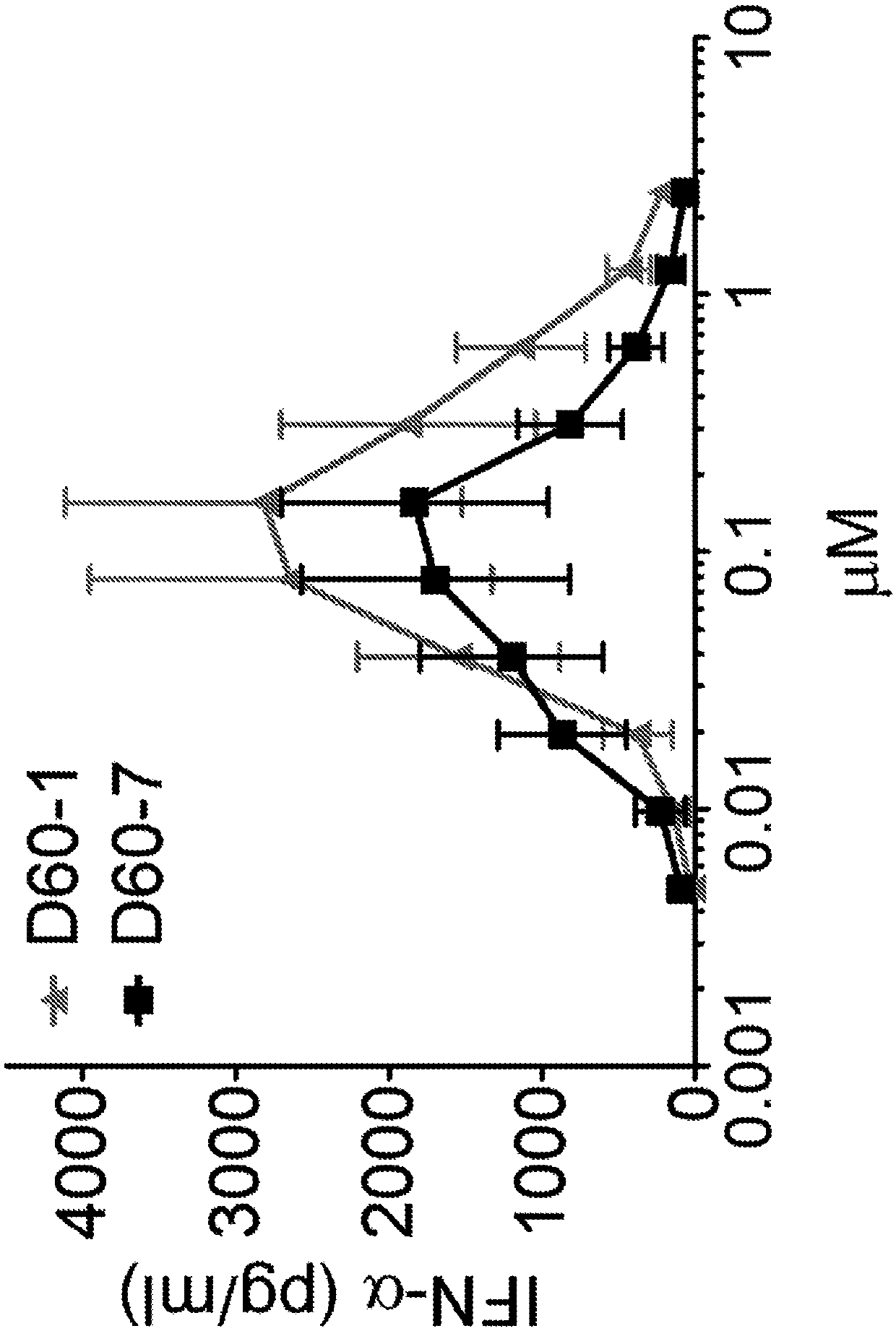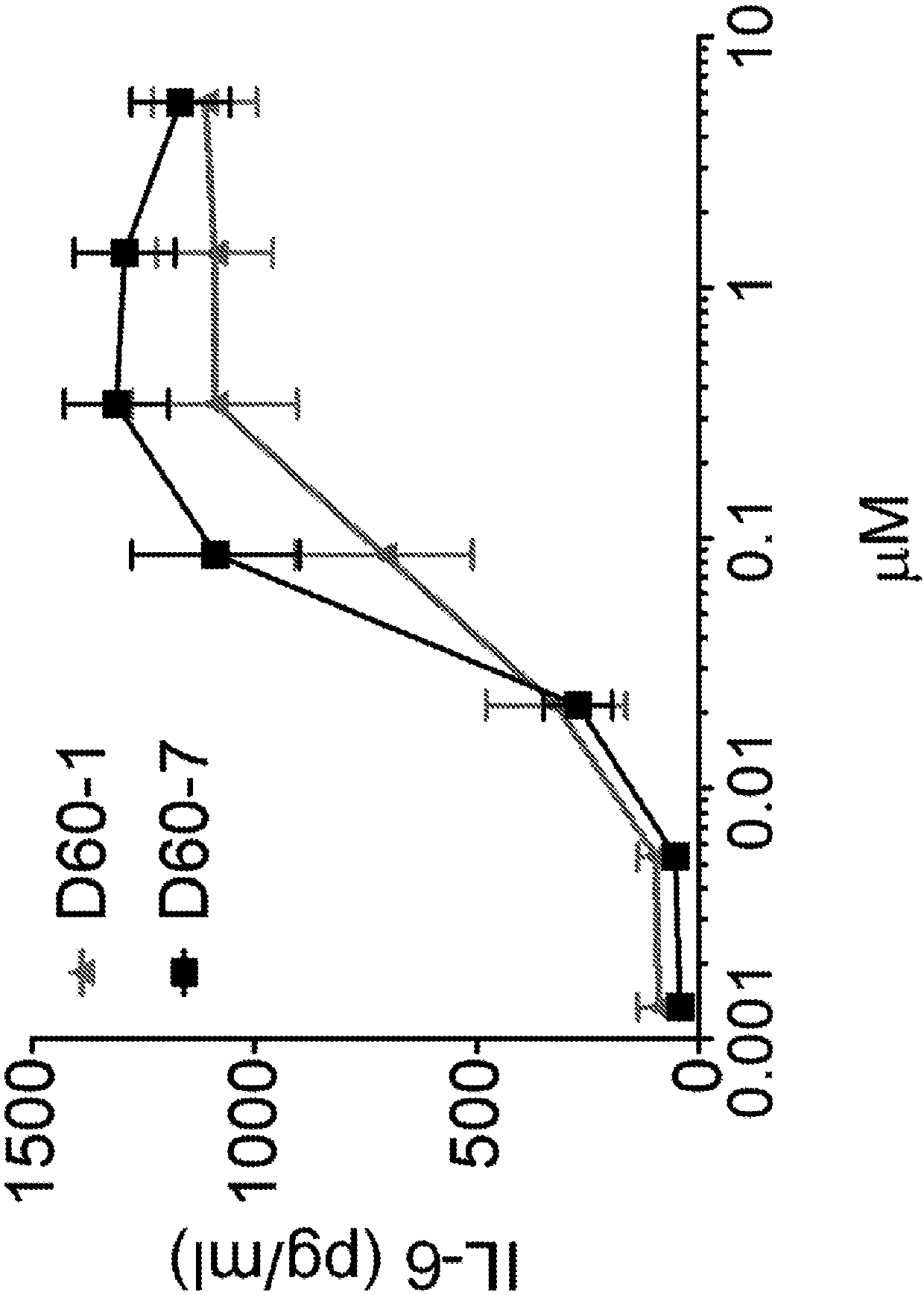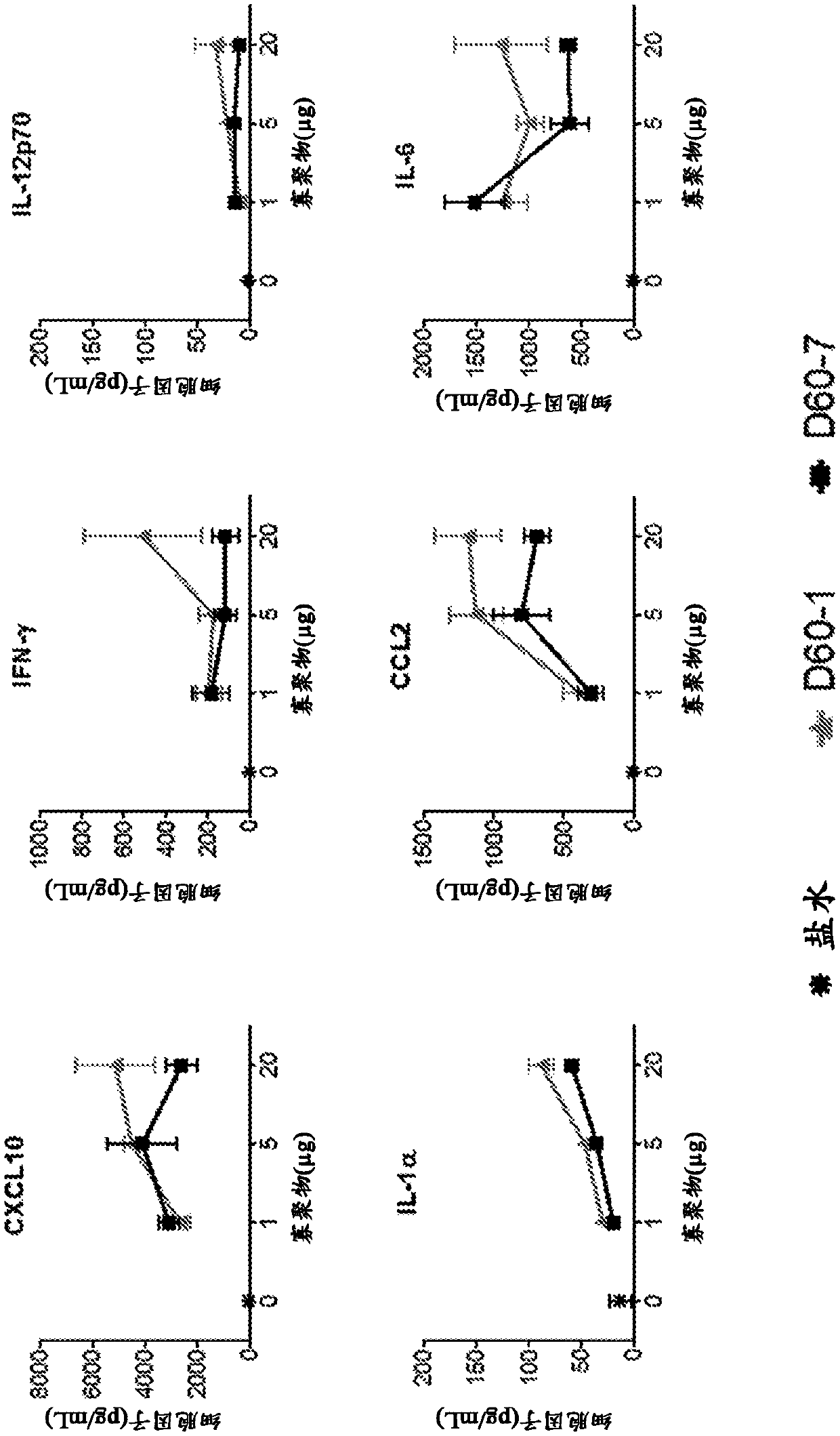Intrapulmonary Administration Of Polynucleotide Toll-Like Receptor 9 Agonists For Treating Cancer Of The Lung
A polynucleotide, therapeutic agent technology, used in therapy, radiation therapy, aerosol delivery, etc., can solve problems such as survival of patients with non-small cell lung cancer that do not improve
- Summary
- Abstract
- Description
- Claims
- Application Information
AI Technical Summary
Problems solved by technology
Method used
Image
Examples
Embodiment 1
[0108] Example 1: Isolation of human leukocytes and stimulation by polynucleotides
[0109] The activity of polynucleotide (PN) was evaluated in vitro by measuring the cytokines secreted by human peripheral blood mononuclear cells (PBMC) and isolated B cells.
[0110] Ficoll-Paque was used to separate PBMC from healthy human donor blood. Anti-CD19 microbeads (Miltenyi Biotec, Auburn, CA) were used to isolate B cells by positive selection from the buffy coat according to the manufacturer's instructions. For IFN-α induction, duplicate cultures of PBMC (2.5x10 6 Cells / mL) are incubated with increasing concentrations of polynucleotide for 24 hours. The IFN-α level in the cell culture supernatant was measured by ELISA (n=4 donors). For IL-6 induction, duplicate cultures of B cells (0.75x10 6 Cells / mL) are incubated with increasing concentrations of polynucleotide for 96 hours. The level of IL-6 in the cell culture supernatant was measured by ELISA (n=12 donors).
[0111] All polynucle...
Embodiment 2
[0114] Example 2: Evaluation of polynucleotides in mice
[0115] After intranasal administration of saline, D60-1, or D60-7 on a bi-weekly schedule, measurement of cytokines in mouse bronchoalveolar lavage fluid (BALF), histopathological score of lung tissue, and body weight changes To evaluate the activity of polynucleotide (PN) in vivo.
[0116] Saline or a polynucleotide TLR9 agonist at a dose of 1, 5, or 20 μg was administered to BALB / c mice (n=5 mice / group) via intranasal route in a volume of 50 μL to ensure delivery to the lungs. The mice were given intranasal treatment on days 0, 14, 28, and 42 for a total of four treatments. The mice are weighed twice a week. Twenty-four hours after the last (fourth) treatment, the mice were sacrificed and bronchoalveolar lavage was performed with saline to obtain eluate from the lower respiratory tract. Subsequently, the lung tissue was harvested and stored in 10% formalin for paraffin embedding, sectioning and staining with hematoxylin...
Embodiment 3
[0119] Example 3: Evaluation of polynucleotides in a mouse model of lung cancer
[0120] Polynucleotide (PN) activity is evaluated in vivo in several different mouse models of metastatic cancer that reaches the lung (Heppner et al., Breast Cancer Res. 2:331-334, 2000).
[0121] The cancer cells are injected subcutaneously (SC).
[0122] D60-7 and anti-PD-1 synergistically prolong the survival of mice bearing lung tumors
[0123] 4T1 breast cancer cells spontaneously metastasize from the subcutaneous space to the lung, liver, pancreas, bone and blood. About 10,000 4T1 cells were injected subcutaneously into BALB / c mice. Anti-PD-1 blocking antibody treatment was initiated 6 days later. The blocking antibody was administered by IP injections of 250 μg every 3 or 4 days for 5 weeks. The primary tumor was surgically removed on the 15th day. The polynucleotide TLR9 agonist D60-7 was administered intranasally in 50 μL saline at a dose of 10 μg, starting on day 16 and continuing for 3 wee...
PUM
 Login to View More
Login to View More Abstract
Description
Claims
Application Information
 Login to View More
Login to View More - R&D Engineer
- R&D Manager
- IP Professional
- Industry Leading Data Capabilities
- Powerful AI technology
- Patent DNA Extraction
Browse by: Latest US Patents, China's latest patents, Technical Efficacy Thesaurus, Application Domain, Technology Topic, Popular Technical Reports.
© 2024 PatSnap. All rights reserved.Legal|Privacy policy|Modern Slavery Act Transparency Statement|Sitemap|About US| Contact US: help@patsnap.com










